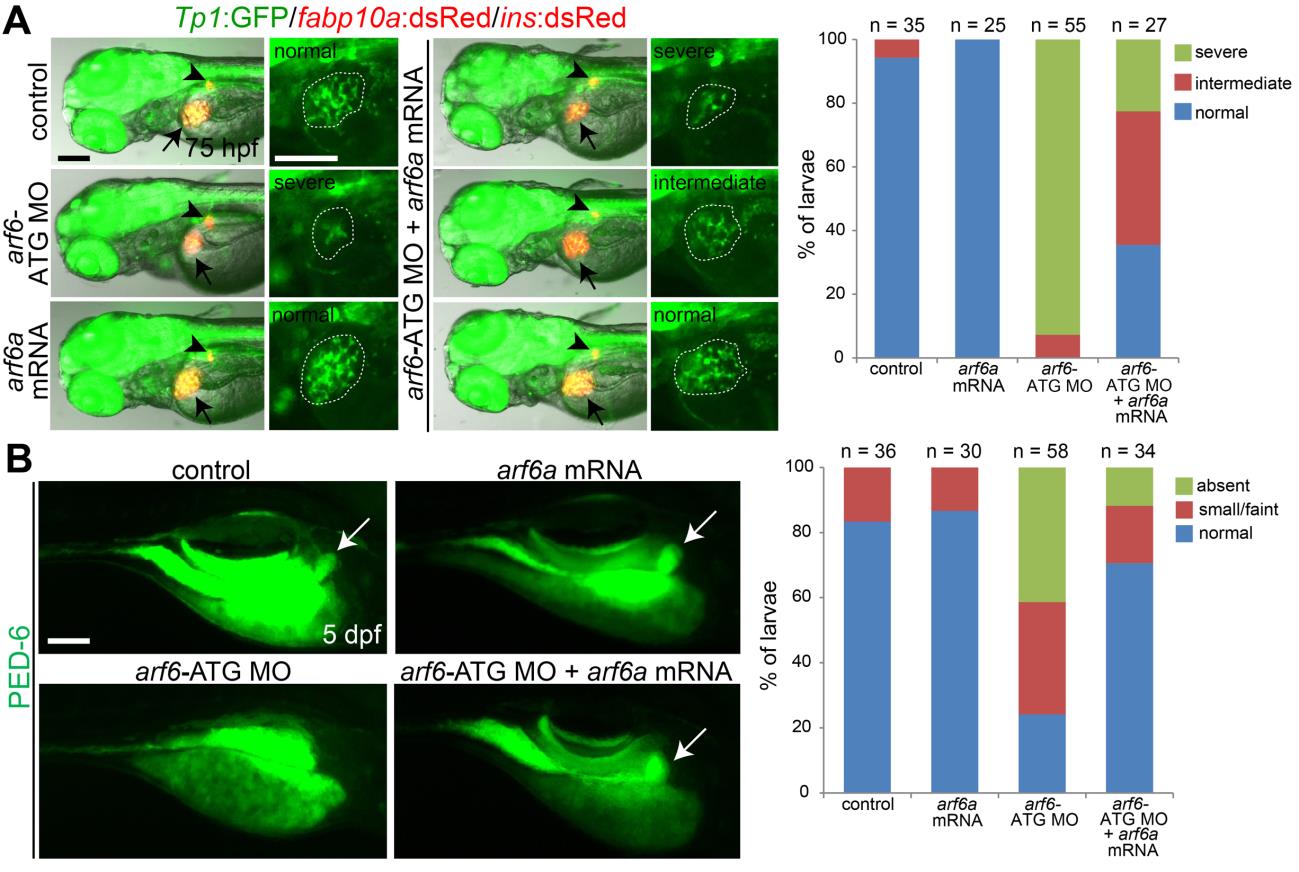Fig. S4
arf6a mRNA injection partially rescues biliary defects in arf6-ATG MO-injected larvae.
(A) The Tg(Tp1:GFP), Tg(fabp10a:dsRed), and Tg(ins:dsRed) lines were used to reveal the intrahepatic biliary structure, the liver, and the dorsal pancreas, respectively. Epifluorescence images showing the expression of these transgenes revealed that a defect in the intrahepatic biliary structure in arf6-ATG MO-injected larvae was partially rescued by arf6a mRNA injection. Based on the severity of the biliary defect, larvae were divided into three groups: normal, intermediate, and severe. Graph showing the percentage of larvae in each group. Arrows point to the liver; arrowheads point to the dorsal pancreas. Dotted lines outline the liver. Lateral views, anterior to the left. (B) Epifluorescence images showing PED-6 accumulation in the gallbladder revealed that the PED-6 accumulation defect in arf6-ATG MO-injected larvae was also partially rescued by arf6a mRNA injection. Based on PED-6 levels in the gallbladder, larvae were divided into three groups: absent, small/faint, and normal. Graph showing the percentage of larvae in each group. Arrows point to the gallbladder. Lateral views, anterior to the right. n indicates the number of larvae examined. Scale bars, 100 µm.

